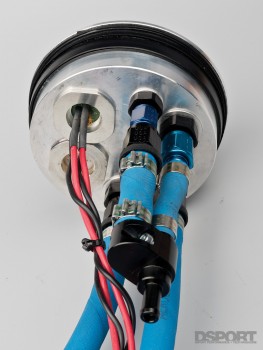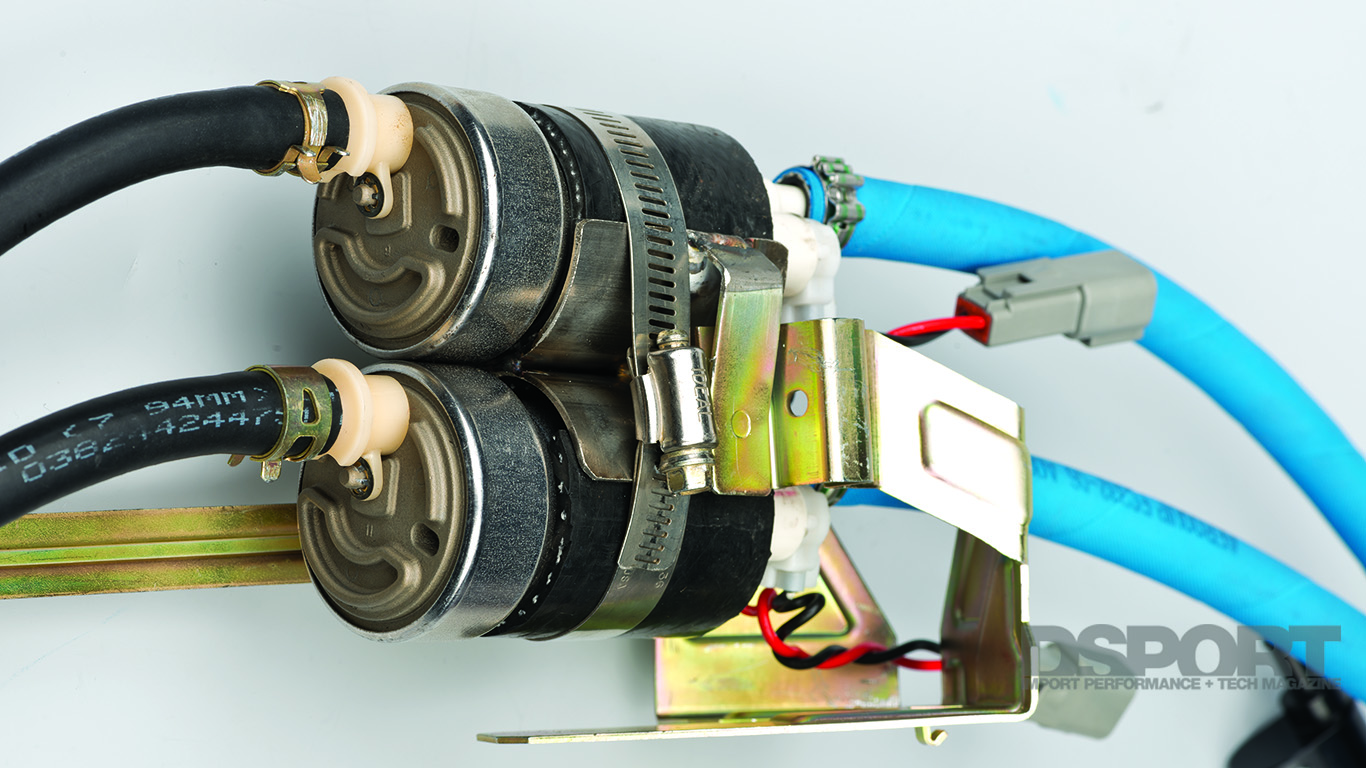THE ULTIMATE TEST BED
 Our 1996 Nissan Skyline GT-R, a.k.a. Project RH-9 GT-R, has been with DSPORT since the start. Our original project vehicle has showcased the maximum performance potential of the stock-block RB26DETT engine while also becoming our first dailydriver capable of 9-second quartermile sprints in full street trim. After undergoing a recent restoration, this project is aiming for 8-second quarter-mile performance while maintaining its daily-driven, streetperformance manners. A relatively small-displacement 2.8-liter engine will rely upon 38psi of boost pressure to generate over 1,200 horsepower to the wheels to reach its performance goals. Considering that the engine will be producing over 500-horsepower-per-liter at the flywheel, there will be little margin for error if anything isn’t done just right.
Our 1996 Nissan Skyline GT-R, a.k.a. Project RH-9 GT-R, has been with DSPORT since the start. Our original project vehicle has showcased the maximum performance potential of the stock-block RB26DETT engine while also becoming our first dailydriver capable of 9-second quartermile sprints in full street trim. After undergoing a recent restoration, this project is aiming for 8-second quarter-mile performance while maintaining its daily-driven, streetperformance manners. A relatively small-displacement 2.8-liter engine will rely upon 38psi of boost pressure to generate over 1,200 horsepower to the wheels to reach its performance goals. Considering that the engine will be producing over 500-horsepower-per-liter at the flywheel, there will be little margin for error if anything isn’t done just right.
THE LOGIC OF E85
While we have had excellent results using VP Racing Fuels Q16 with our previous setup, there are some drawbacks to leaded racing fuel. First, the future availability of leaded racing fuels is always in contention. It may only be a matter of time before legislation passes regionally or nationally that restricts the use of leaded fuels even for off-road and motorsports use. Second, leaded fuels are only meant for off-road use. That means building a streetcar that can only achieve peak performance on leaded race gas means that you have to have a lower-performance “pump-gas” tune when you are on the street. Third, high performance fuels like C16, Q16 or VP Import are quite expensive.
 Up until now, we’ve been reluctant to build DSPORT project vehicles to run on E85 due to the limited availability in Southern California. While the availability is probably not going to get better anytime soon, our Feature Editor Richard Fong is lucky enough to live close to a station offering E85 at the pump. However, this alone wasn’t enough to get us to make the switch. Instead, it was the ability to put together a performance flex-fuel solution that finally won us over. With the right parts in place, a proper flex fuel conversion will allow a vehicle to run on pump gas, E85 or any mixture of the two. Hence, we could get the maximum range per tankful when we decided to run pump gas. We could get the maximum performance when we filled the tank with E85. Or, we would get a blend of extended range and performance with any mixture of gasoline and E85 used. It appeared to be time to flex, if we could address all of the drawbacks of E85.
Up until now, we’ve been reluctant to build DSPORT project vehicles to run on E85 due to the limited availability in Southern California. While the availability is probably not going to get better anytime soon, our Feature Editor Richard Fong is lucky enough to live close to a station offering E85 at the pump. However, this alone wasn’t enough to get us to make the switch. Instead, it was the ability to put together a performance flex-fuel solution that finally won us over. With the right parts in place, a proper flex fuel conversion will allow a vehicle to run on pump gas, E85 or any mixture of the two. Hence, we could get the maximum range per tankful when we decided to run pump gas. We could get the maximum performance when we filled the tank with E85. Or, we would get a blend of extended range and performance with any mixture of gasoline and E85 used. It appeared to be time to flex, if we could address all of the drawbacks of E85.


